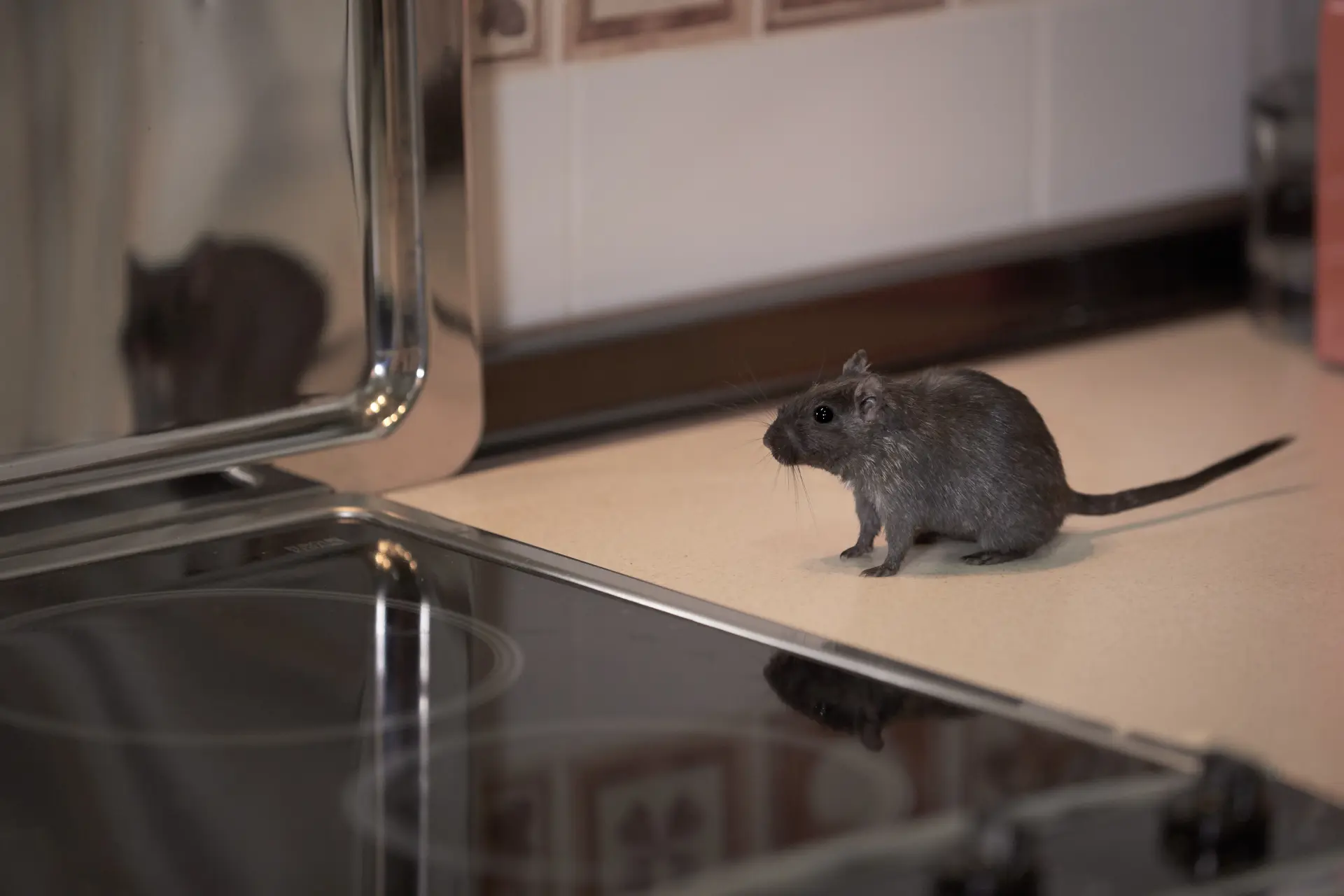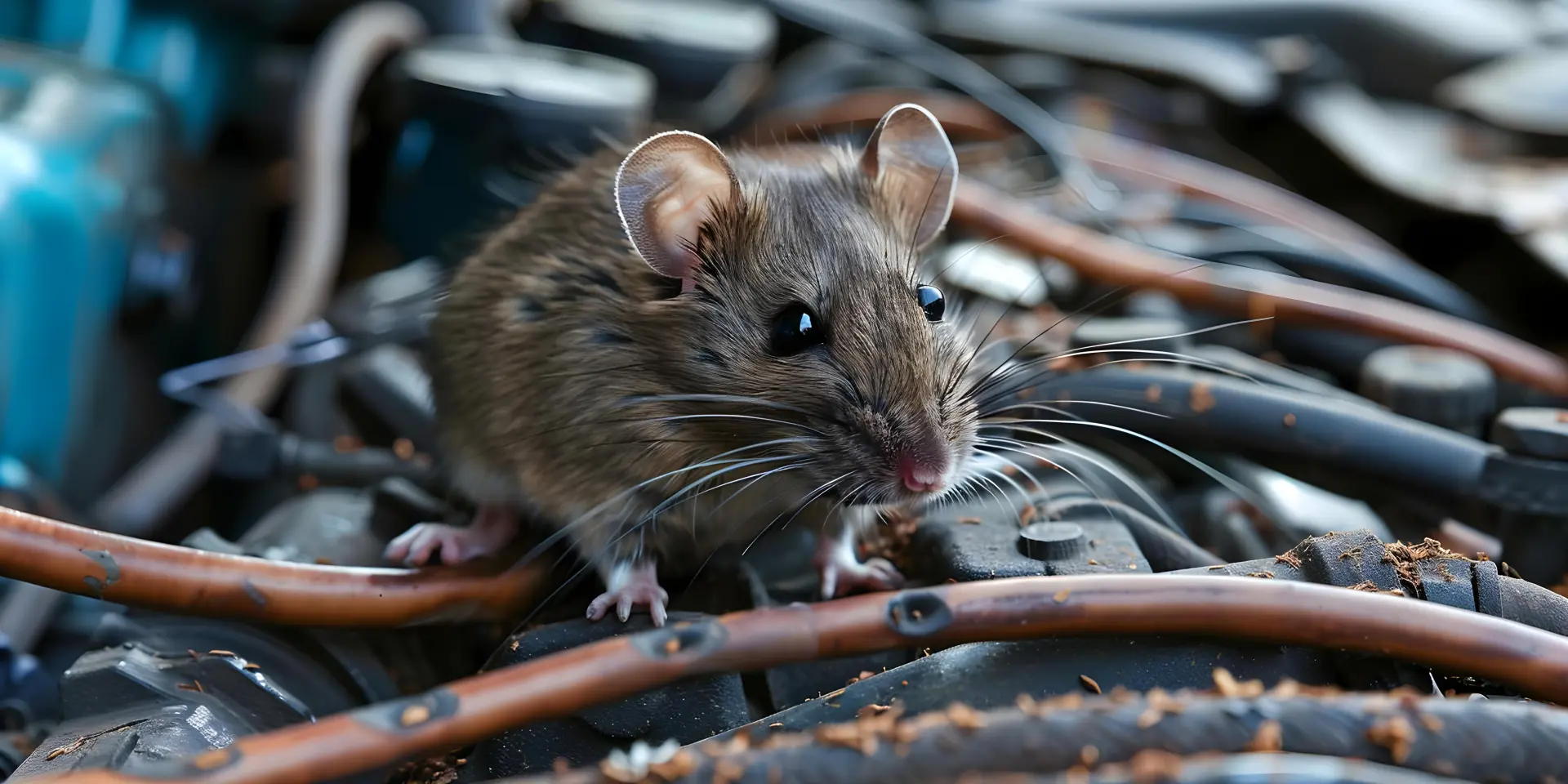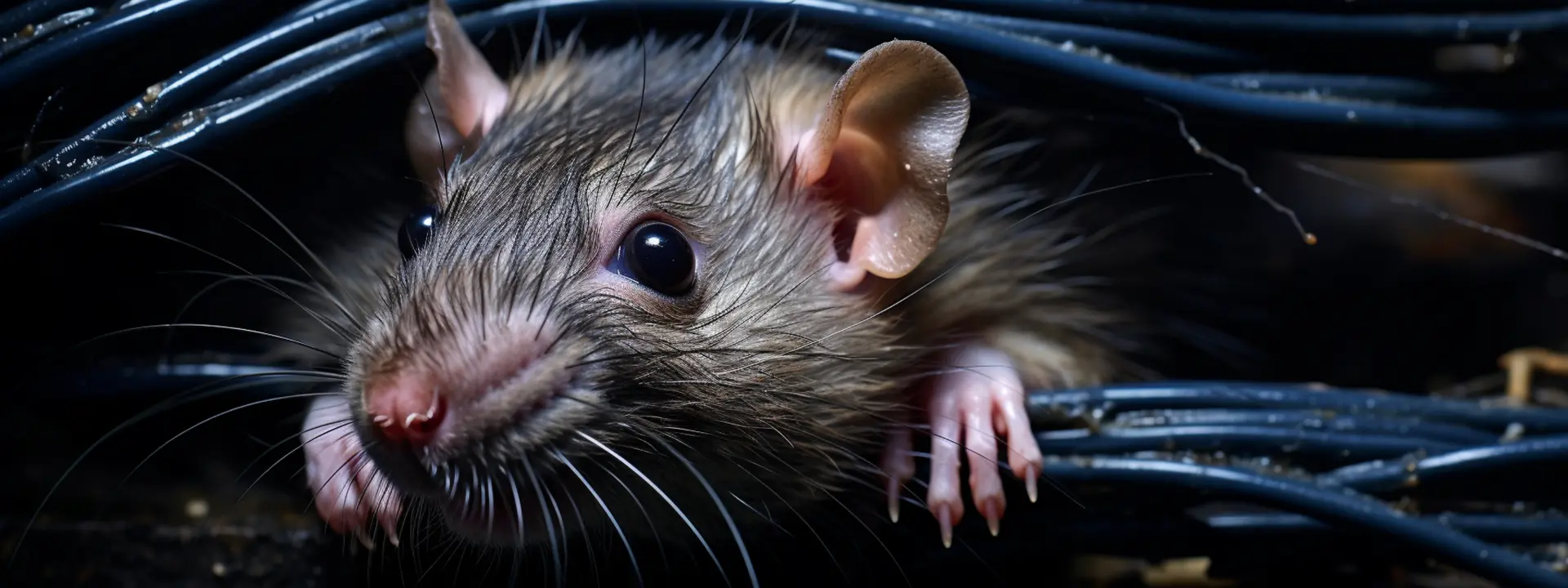How rodents get in
Rodents are persistent explorers that climb, squeeze and gnaw. A mouse can pass through a hole no wider than a pencil, and a rat needs only a little more space. Small cracks become doorways once teeth work at weak edges. They test corners, pipe runs and shaded spots until a route feels safe.
Food, warmth and shelter guide their movements and will allow you to figure out where they may stay or nest. Rubbish bags, pet bowls and rich bird feed are like beacons. Any overgrown shrubs and stacked logs offer plenty of coverage for them to run around or hide in. Be aware that whatever looks cosy to you can feel like a protected highway to them.
Service gaps act like ready-made tunnels. Where pipes or cables pass through walls, there is often a ring-shaped space for them to pass through. Mortar crumbles, frames shift with the seasons, and utility boxes sit slightly proud. These small flaws link up into a path that rodents quickly learn to follow.
Roofs and eaves are common entry zones. A slipped slate or lifted flashing can lead straight into the loft. Tree branches that touch the roofline form easy bridges for them to use.
First survey of your home
Begin outside and follow the full boundary at a slow, steady pace. Scan the base of walls, steps and thresholds for holes, cracks and disturbed soil. Look closely for gnaw marks and small piles of debris. Use your phone to take photos and notes, which will help you plan repairs and remember routes.
Move to doors and windows and check how each frame sits in its opening. Do the daylight test at dusk by shining a torch from inside. Slivers of light at the edges suggest gaps worth sealing. Test draught strips and threshold seals for any wear and tear or signs of movement.

Inspect every service entry point for any water, gas, electricity and data. If a filler has shrunk or broken away, it's best to mark it for repair as soon as possible if you worry that rats or rodents may be a problem. Watch for loose-sleeving or soft foam as it can be easily chewed. Greasy rub marks, fresh droppings and a stale smell are often a major sign of frequent pest traffic.
Finish with the roof and outbuildings without doing any dangerous climbing. Use binoculars from the ground to spot if you have any missing tiles and torn felt. Check your sheds, garages and bin stores for gaps or holes near the base and corners. Raise all your stored items onto pallets and tidy timber stacks to reveal hidden spots.
Sealing gaps and cracks
Choose materials that resist chewing and movement. Pack any small gaps you can find with stainless steel wool or copper mesh, and make sure to lock it in place with a quality sealant that bonds to the surface. For any larger openings, fit a rigid metal plate or mesh and then seal the edges.
Work methodically from low to high. We recommend starting at the base of your walls and going all around the steps and thresholds. Move up to window frames, service entries and eaves. Repoint any loose mortar properly so the seal sits on firm material.
Avoid relying on soft expanding foam; again, it is easy to chew through and can shrink to leave a neat tunnel that they can crawl into. If you need foam to fill space, cap it with cement mortar or a screwed metal cover. Where airflow is required, fit a fine mesh that keeps pests out while still allowing air to move.
After sealing, it's best to test every repair. Try to insert something into it, like a blunt pencil, to check for weaknesses. Add more filler or a stronger cover if anything yields. Keep a simple log or take pictures, and revisit the area a week later to catch any early failures.
Letterboxes, vents and air bricks
A poorly fitted letterbox can become an invitation. Make sure the external flap sits flat and closes cleanly. Fit an internal letterbox cage to catch mail and block access. Brush strips reduce draughts and hide thin gaps. Wall vents and extractor outlets need close checks. Brittle plastic grilles crack in sunlight and leave ragged edges. Replace damaged parts with robust metal versions. Over intact covers, add a fine stainless steel mesh with secure fixings. Air bricks are essential for dry subfloors, so do not block them. Fit purpose-made guards that keep the same open area. Clear soil, leaves and mulch that build up around openings. Raised ground levels invite burrowing and can bypass the grille.

A poorly fitted letterbox can become an invitation to pests. Make sure the external flap sits flat and closes cleanly. You can also fit an internal letterbox cage that will not only catch mail, but also block any access rodents may have into your home. Brush strips are also a great way to reduce draughts and hide thin gaps.
Wall vents and extractor outlets need thorough checks because brittle plastic grilles crack in sunlight and tend to leave ragged edges. Be sure to replace the damaged parts with robust metal versions. Over intact covers, add a fine stainless steel mesh with secure fixings.
Air bricks are essential for dry subfloors, so do not block them. Install purpose-made guards that keep the same area open.
Loft and attic proofing
Create safe, tidy access so you can check every corner. You can do this by laying secure boards and setting up bright, stable lighting. Always make sure to wear gloves and a mask when handling areas with insulation and dust. Make sure to move your belongings into sealed plastic boxes with tight lids so that nothing can climb inside.
With the space clear, it's then wise to inspect the roof from inside on a bright day. Look for points where daylight shows through tiles or eaves, and trace any draught to its source, closely assessing the edges. Seal any gaps you see with cut-to-fit metal mesh bedded into a suitable sealant. Protect services that invite gnawing. Enclose any exposed electrical cables in split conduit, and clip your pipework so that movement does not open gaps. It's also a wise idea to fit metal collars or mesh sleeves where pipes pass through timber or boards.
Finish with simple routines that keep the loft uninviting. Keep insulation flat and dry, and place trays under tanks to reveal drips early. Wipe up condensation and fit a compressible seal around the loft hatch. Be sure to reinspect these throughout each season and after storms to identify any new faults as quickly as possible.
We provide rapid rodent investigations across lofts/attics, kitchens, wall cavities, floor voids, garages and sheds. Services include entry-point surveys, thermal/visual inspections, proofing and sealing, safe trapping and targeted baiting, nest removal, sanitation/odour treatments, and follow-up monitoring. We also advise on hygiene, storage and repairs to prevent re-infestation and protect your property.




